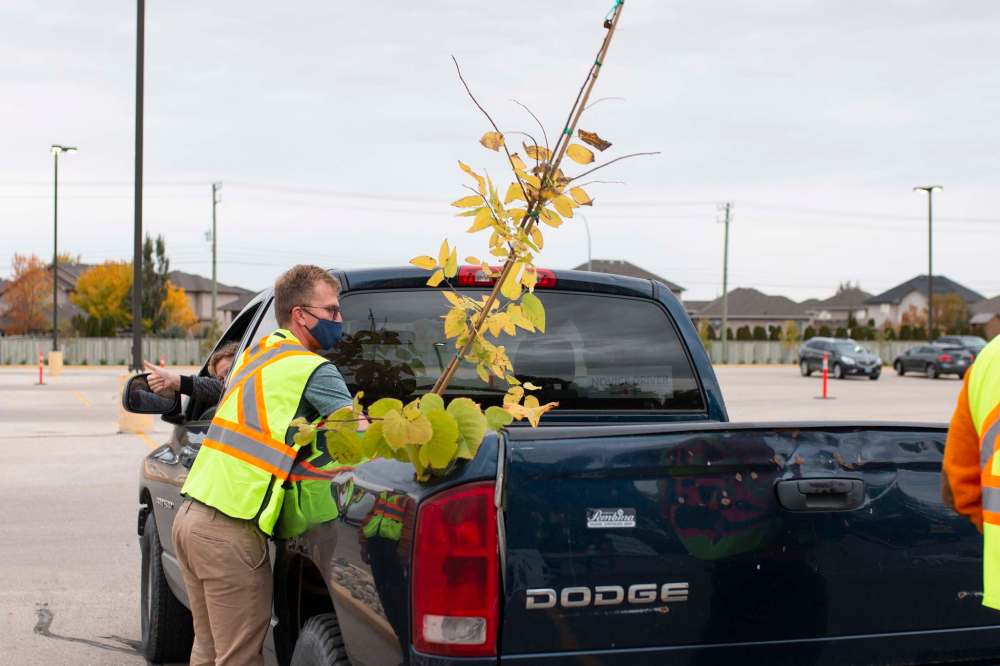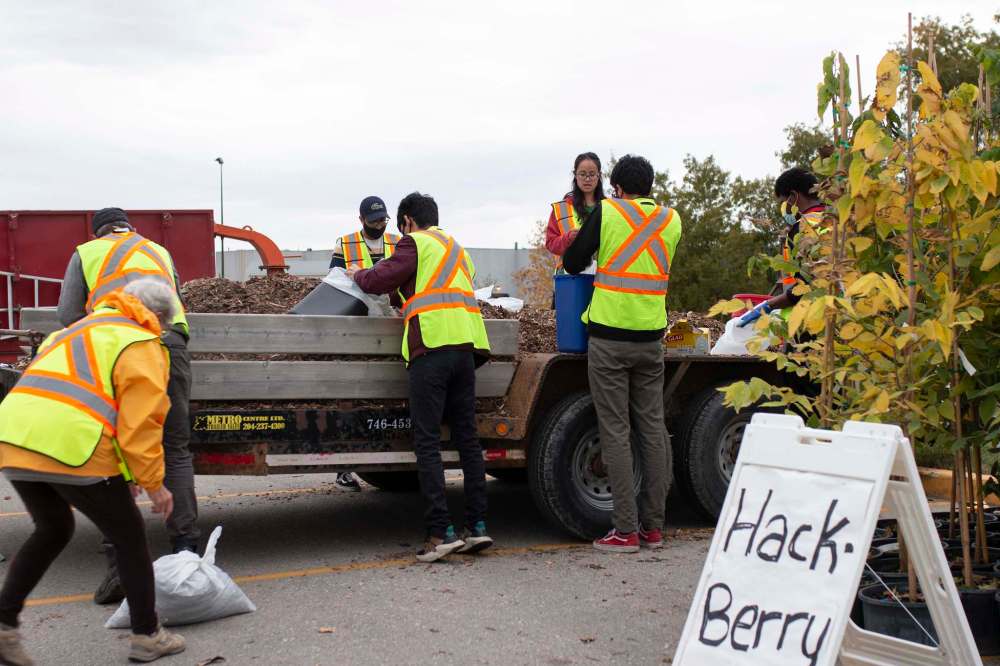Good things come in trees
Cities, including Berlin and New York, using maps and apps to track planting, maintenance of their arboreal friends
Advertisement
Read this article for free:
or
Already have an account? Log in here »
To continue reading, please subscribe:
Monthly Digital Subscription
$0 for the first 4 weeks*
- Enjoy unlimited reading on winnipegfreepress.com
- Read the E-Edition, our digital replica newspaper
- Access News Break, our award-winning app
- Play interactive puzzles
*No charge for 4 weeks then price increases to the regular rate of $19.00 plus GST every four weeks. Offer available to new and qualified returning subscribers only. Cancel any time.
Monthly Digital Subscription
$4.75/week*
- Enjoy unlimited reading on winnipegfreepress.com
- Read the E-Edition, our digital replica newspaper
- Access News Break, our award-winning app
- Play interactive puzzles
*Billed as $19 plus GST every four weeks. Cancel any time.
To continue reading, please subscribe:
Add Free Press access to your Brandon Sun subscription for only an additional
$1 for the first 4 weeks*
*Your next subscription payment will increase by $1.00 and you will be charged $16.99 plus GST for four weeks. After four weeks, your payment will increase to $23.99 plus GST every four weeks.
Read unlimited articles for free today:
or
Already have an account? Log in here »
Hey there, time traveller!
This article was published 22/11/2020 (1851 days ago), so information in it may no longer be current.
At least once a week for the past three summers, Sebastian Hasse hauled a trailer behind his bike carrying watering cans to care for trees in his neighbourhood.
In May, CityLAB Berlin — a lab that develops digital tools using open data — launched a mobile phone app and online platform called Giess den Kiez (Water the Neighbourhood). The prototype encourages residents to adopt and explore Berlin’s trees on a virtual map, which provides information on their species, age, and water needs based on recent rainfall.
The app’s code is free for other communities to use on GitHub, an online service where software developers manage and share code.

CityLAB Berlin’s project invites users to log their volunteer work, so Berliners can co-ordinate city-wide watering to help trees survive the city’s chronic drought. Since the project launched, it has signed up 1,600 unique users who have watered trees more than 16,000 times.
The app inspires residents to collaborate on urban tree care, wrote 41-year-old Hasse in a message.
Public interest in tree planting and urban tree stewardship has boomed in the last few years in an effort to counter climate change.
Disease, pests, and storm damage to Winnipeg’s urban forest are straining the city’s efforts to keep up with substantial annual canopy loss. Mayor Brian Bowman announced Winnipeg’s One Million Tree Challenge last September — an initiative that encourages residents, non-profit organizations and businesses to help plant a million trees by the time Winnipeg reaches one million residents by 2040.
Trees Winnipeg, the non-profit spearheading the tree planting program for private properties, hosted its second ReLeaf Tree Planting Program tree pickup of the year on Sept. 26.
A long line of Winnipeggers waited in their cars at a Chevrier Boulevard parking lot at 9 a.m. sharp to pick up the trees they purchased. Volunteers wearing masks hustled to grab the trees — basswood, cherry, hackberry, and pagoda dogwood — while others packed bags of mulch. Over the course of the morning, 138 people picked up 273 trees.
Kanishk Kulhari and his two housemates were there volunteering with the organization for their first time.

“I feel like an app would be really helpful for all the people who are looking for volunteering opportunities,” said 20-year-old Kanishk, who studies agriculture at the University of Manitoba. “I had to go to all the organization websites to look for particular opportunities.”
“People would actually take initiative because, you can see, there’s so many people coming here to collect the trees,” said Kanishk, motioning to the long line of customers.
New York City also launched an online tree map in 2016 based on a city-wide tree census. NYC Parks staff and volunteers completed the entire inventory using an app designed for the census.
On New York’s virtual map, users can favourite trees and view statistics by borough, neighbourhood, and tree, including the date and nature of reported tree stewardship activities such as weeding, mulching, and watering.
“It’s one of the best ways we track volunteer stewardship, as well as our own tree care done by staff, and averages approximately 10,800 unique monthly viewers,” said NYC Parks press officer Dan Kastanis in an email.
When Georgia Silvera Seamans heard NYC Parks was recruiting volunteers for the tree census, she jumped at the opportunity. Since the map went live in 2016, she said she uses it to check when a tree has been planted or serviced in the city.
Seamans said whenever she waters a tree, she usually doesn’t get around to logging it online. The 44-year-old mother said she would probably record the information if the map was a mobile phone app instead.

“If I’m outside, I have my phone,” said Seamans in a Zoom interview. “If I have to remember what I did to then go home and put it in through my laptop, it just won’t happen.”
Seamans said the map could be more effective if it also nudged people to share their activities with others and provided an alert system that reminded users of upcoming activities.
Lisa Jones, Trees Winnipeg’s program director, said she agrees there could be a place for Winnipeg to use an app for urban tree stewardship.
The non-profit will hire a project manager to lead its One Million Tree Challenge outreach and strategy.
The COVID-19 pandemic has slowed the city’s tree planting efforts, said Dave Domke, manager of parks and open space at the City of Winnipeg.
The One Million Tree Challenge depends on shared responsibilities between multiple stakeholders, many of whom are still developing their strategy, said Domke.
“Those (maps) are very intriguing models,” said Domke in a phone interview. “That’s something Winnipeg might look at. But we got to walk before we run with this program.”

He said Winnipeg’s tree inventory data is already public, but someone would need to harness it for use in an app.
Martha Barwinsky, the city’s forester, said her department is developing a 20-year urban forest strategy that includes a recently announced public engagement campaign where Winnipeggers can voice their ideas for managing the city’s urban forest.
Rosanna Hempel is a senior journalism student in the Creative Communications program at Red River College in Winnipeg. This article was a product of a feature writing assignment.


